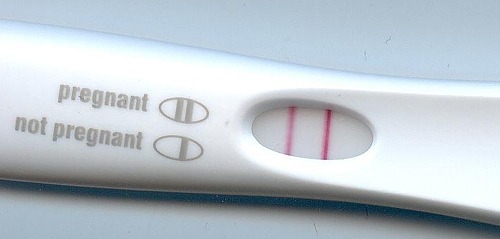
How To Use A Pregnancy Kit
25 Dec 2017 | 4 min Read
Babychakra
Author | 1369 Articles
If you become pregnant, it is fascinating to learn how a pregnancy kit works.
Am I pregnant yet? Face it, the suspense is killing you. Being a mother is every woman’s dream, and you may want to know if the reason for your missed periods is a pregnancy or simply a false alarm. At these times, a pregnancy kit proves to be like divine intervention. If you think you’re pregnant, it is time to take the test. Here’s everything you need to know about how a pregnancy test kit works and when you should use one.
How does a pregnancy kit work?
A pregnancy kit tests for the presence of a hormone known as human chorionic gonadotropin (hCG), which is produced in large quantities during pregnancy. The home pregnancy kit shows similar results to the ones taken at the doctor’s clinic.
When you get pregnant, the egg gets fertilized by the sperm in the fallopian tube. After 9 days of fertilization, the fertilized egg moves down the tube and gets attached or implanted within the walls of the uterus and the placenta begins to grow. The placenta releases hCG into the bloodstream, which is also passed into the urine. The levels of hCG in the first few weeks of pregnancy are very high and double every 2 to 3 days.
Know how a pregnancy test works from this video.
Source: TED-Ed
How to use a pregnancy kit at home?

Whichever pregnancy kit you purchase, always make sure to use it in the morning, by testing the first urine of the day, which is collected overnight in the bladder (as it gives the most accurate results). Always take a midstream sample of urine (allow the first stream of urine to pass before you use the kit). Each pregnancy kit has a different sensitivity to hCG, so if the sensitivity level is low, the first sample of urine may give a positive result.
Steps to use a pregnancy kit:
- Read all instructions given on the home pregnancy kit. Instructions vary from kit to kit.
- Read the result after the appropriate time given has passed.
- Use the urine sample as required on the kit. If the kit asks for a first urine sample, test the urine that has been in the bladder for at least 4 hours or more, ideally the one after you wake up in the morning.
- If a midstream sample is needed, let go some urine first and then hold the dipstick in the strem of urine as you urinate.
How early to use a pregnancy kit?

The best time to use a pregnancy kit depends on the type of kit you’re using. Some home pregnancy kits can be used on the first day of the missed period. But if you want accurate results, do the test after a few days. If you take the test after you’ve missed your periods, and it is negative, do not lose heart. Take the test again within a week if your periods haven’t started yet or visit your doctor.
How to interpret the results of a home pregnancy kit?

Home pregnancy kits detect the presence of hCG in the urine. If you are pregnant, most kits show a change in color or some change in the indicator area on the strip.
What things can affect the test result?

If you take the test too early, the test may be negative due to insufficient amounts of hCG seen in the urine sample. This is called a false negative result. A false negative can also be seen if you drink too much water which dilutes the urine. Certain medicines and illnesses can also lead to a false positive result i.e. showing a positive change in the strip when you are not actually pregnant.
Thus, its best to get yourself checked by a doctor if you are really suspecting a pregnancy and do get a positive pregnancy test.
Disclaimer: The information in the article is not intended or implied to be a substitute for professional medical advice, diagnosis or treatment. Always seek the advice of your doctor.
Also Read – Pregnancy Home Test: Understand The Basics
A


Related Topics for you
Suggestions offered by doctors on BabyChakra are of advisory nature i.e., for educational and informational purposes only. Content posted on, created for, or compiled by BabyChakra is not intended or designed to replace your doctor's independent judgment about any symptom, condition, or the appropriateness or risks of a procedure or treatment for a given person.
